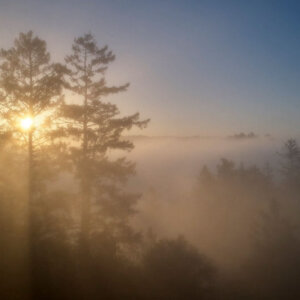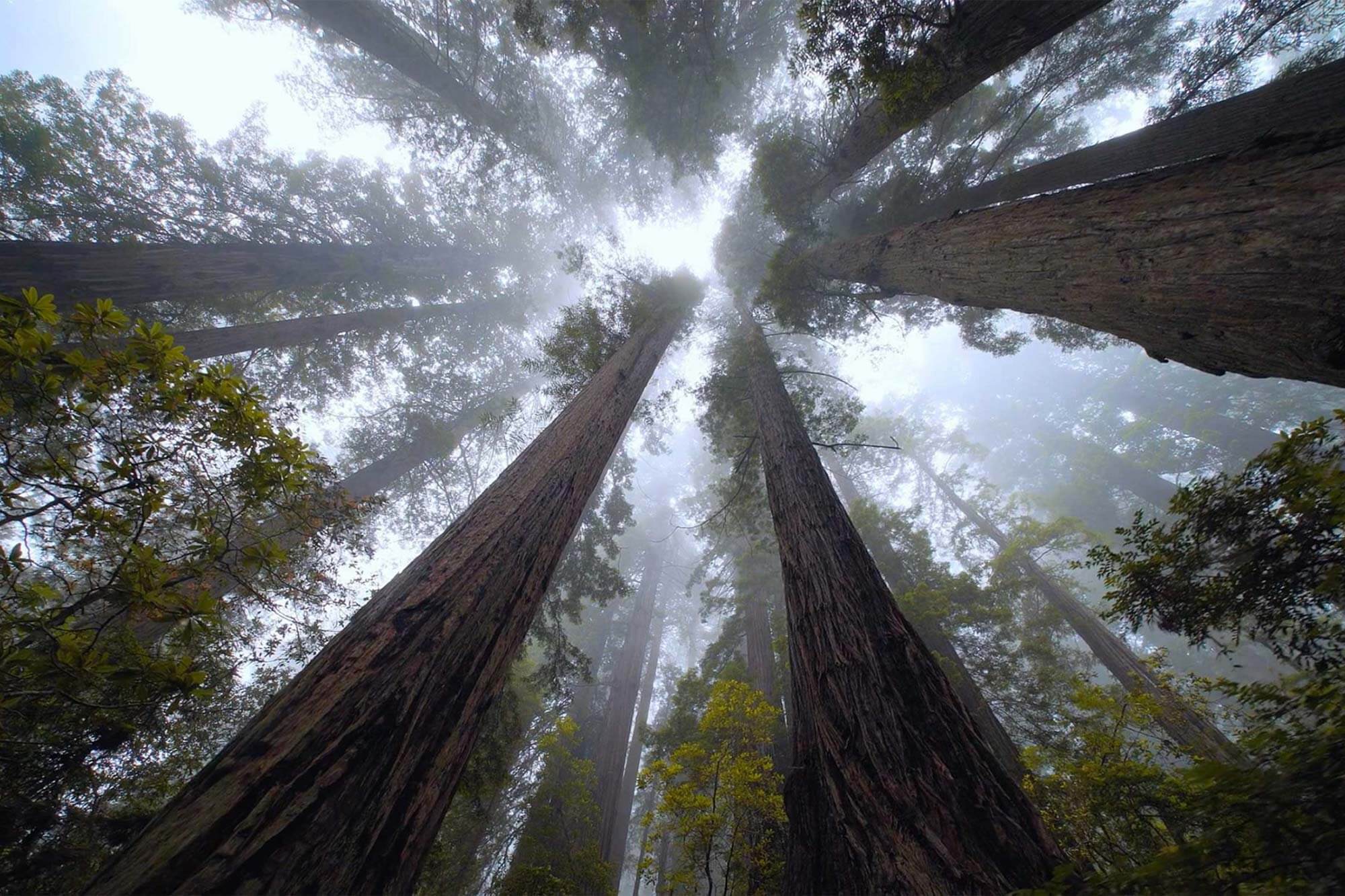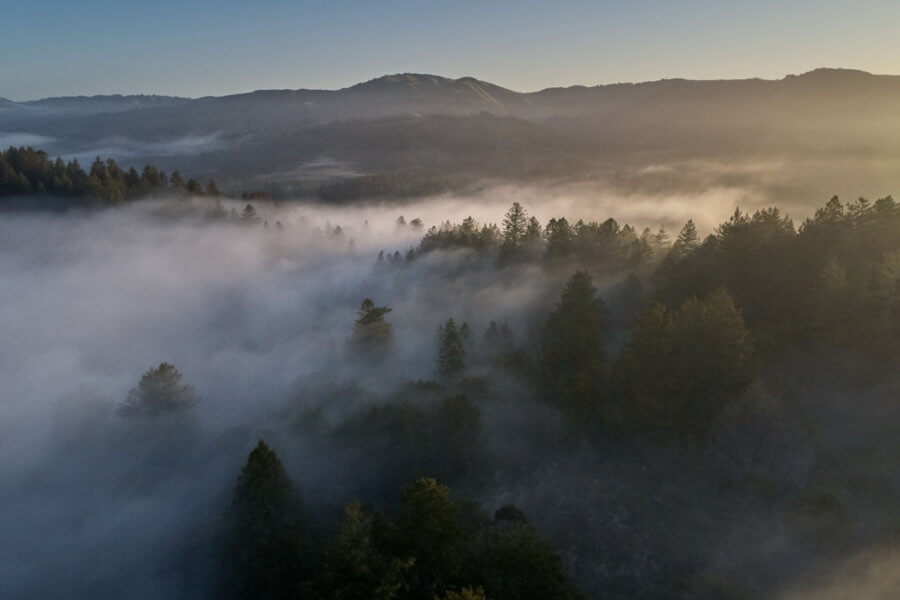Redwoods and Fog
Suspended in Air

by Canopy Dynamics
Much like clouds, fog happens when water in its gaseous form cools to a liquid temperature, but remains suspended in air. Tiny water droplets condensing and hanging in the air create a dense cloud close to the ground, making a visible haze as light is refracted through it. We see it most along bodies of water, where the cool air moves in, colliding with the warm atmosphere over land, and creating fog from the higher humidity in the air.
The relationship between redwood forests and fog is cyclical. The coastal region that redwood forests grow in is traditionally a very foggy area, but not all of that fog rolls in from the ocean. Redwoods and other pines contain fragrant chemicals called terpenes that serve many purposes, and one of those is to condense the moisture in the surrounding atmosphere.
Fog and clouds form around the trees, creating more moisture and cooler temperatures, which help redwoods thrive. Redwoods have unique features that allow them to make use of moisture in the air, starting at the top of their canopies all the way down to their widespread root systems.
Creating Fog
Standing among the redwood fairy rings is a perfect way to experience the magic of fog among the redwoods. The scent of the chemicals responsible for the atmospheric moisture hang in the air around you, and even carry their own health benefits for humans! There among the trees, you may even experience localized rain beneath the canopy. Specialized redwood leaves capture moisture droplets from the fog, absorbing some, but also creating an artificial rainfall that benefits their roots and all the surrounding plants at the forest floor.
If you find yourself among an old-growth grove, you’re even more likely to witness and experience the relationship between these unique trees and water vapor. Old-growth trees are more likely to develop in areas where they can receive the proper moisture, meaning fog is likely a common occurrence. At some 200-300 feet of height, these giants rely on atmospheric moisture to sustain their highest reaches, absorbing fog droplets through their leaves rather than sucking it up through the full length of the trunk. The features of old-growth trees, like larger branches and higher heights, also make fog drops more visible, as the trees put out far more leaves than younger, smaller trees.

Climate and Fog

Camp Jones Gulch foggy forest by Canopy Dynamics
As climate change affects temperatures and habitats, redwoods are threatened by the myriad of changes. Warmer, dryer climates increase the risks of uncontrolled wildfires, less precipitation, and even less fog. Without fog, the upper branches of older redwoods can’t absorb the necessary moisture to reach their mature heights, leading to dead tops or stunted growth. Read our Climate Action Plan to learn about our efforts to conserve redwoods and their surrounding environment through stewardship and other actions.
Redwoods seen through a haze of fog are iconic, after millennia of growth along the Santa Cruz Mountains. It’s only recently that we’ve come to understand the relationship between the trees and the atmospheric phenomenon. Working together, we can ensure future centuries of redwood forests among the fog.
Learn more Under the Redwoods
For more than a decade, Dr. Daniel Fernandez has been researching fog through the use of fog collectors, which operate on the same idea as the specialized needles of the redwood trees. Dozens of these collectors are spread throughout California, collecting moisture from fog clouds, allowing Dr. Fernandez to study the variability of the cloud’s contents and frequency of fog over time throughout central California and the Bay Area. His home institution, California State Monterey Bay, provides the perfect environment where cold coastal air collides with the warm inland environment.
To learn more about the nature and science of fog, join Dr. Daniel Fernandez Under the Redwoods, for the first in a series of elemental talks around redwood forests.
The Sounds of Fog?
Last year we launched a project with field recordist Thomas Rex Beverly to record the sounds of redwoods. Check out this excerpt from his sound library of redwood fog and needle rain in the old-growth redwoods of Camp Jones Gulch.
More to Explore
- Explore more Redwood Facts
- Learn why Redwoods are Climate Champions
- Read our four-part Redwoods and Climate series